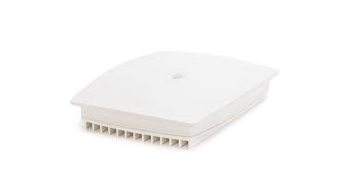Small Cell World Summit
The Small Cell World Summit 2014 is set to bring hundreds of carrier representatives and solutions providers together in London this week. The Small Cell Forum said it will discuss the recently announced third iteration of its use cases and best practices guide. Release 3 focuses on outdoor, urban deployments.
While indoor small cells can often leverage Ethernet for backhaul, outdoor cells do not usually have this option. Small Cell Forum CEO Sue Monahan told RCR Wireless News earlier this year that research points to wireless backhaul as a promising solution for urban small cells. “An interesting point is that our business case analysis for urban found that wireless backhaul had a much lower total cost of ownership than fiber,” she said.
Alcatel-Lucent partners with Towerstream
Backhaul was a major motivation for Alcatel-Lucent’s small cell partnership with Towerstream, announced late last month. The agreement gives Alcatel-Lucent access to the rooftop tower company’s high-capacity backhaul, power and mounting rights, which are part of Towerstream’s HetNets Tower Corporation subsidiary.
“Scaling the deployment of metro cells requires that we simplify site acquisition, power accessibility and backhaul connectivity,” said Mike Schable, who heads Alcatel-Lucent’s small cells business unit. “By adding Towerstream to our Metro Cell Express Site Certification program we have greatly expanded our ability to help our customers accelerate small cell sites on-air, helping them to build the ultra broadband wireless networks that their subscribers demand.”
Dual-band small cells: LTE reliability matches 3G in SpiderCloud test
SpiderCloud Wireless is ready to start shipping its dual-band SCRN 3G/LTE 310 radio node after the small cell solution demonstrated reliability in LTE trials that matched that achieved in 3G trials. The average call setup success rate was 99.5% and the handover success rate within SpiderCloud’s small cell network was 99.9%. The call drop rate was .4%, and the average download speed was 56.5 megabits per second.
The SCRN-310 supports 32 3G/HSPA+ channels, 32 active LTE users and supports Voice over LTE. LTE bands supported include: band class 2 (1.9 GHz), band class 3 (1.8 GHz), band class 4 (AWS 1.7 GHz), band class 7 (2.6 GHz) and band class 13 (700 MHz). 3G bands supported include: band class 1 (2.1 GHz), band class 2 (1.9 GHz) and band class 5 (850 MHz). SpiderCloud’s small cell solution includes a local controller, called a services node, which it says aggregates up to 100 radio nodes over Ethernet and connects them to the mobile operator’s core network.
Follow me on Twitter.

HetNet News: Small cells take center stage this week
ABOUT AUTHOR
